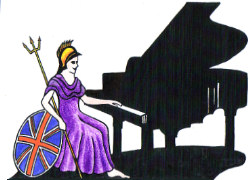Teachers, Accompanists and Piano Entertainers in the UK

UK Piano Page

3a Red Brae Drumalig Road
Temple
Antrim, County Antrim Bt27 6UD
Northern Ireland
Specialising in top quality mint condition used
11, St. Mary's Hill
Stamford, Lincolnshire PE9 2DP
England
Music shop established in 1963 we stock a large
251 Kings Road
Chelsea
Chelsea, London
England
Chelsea London was founded on the famous King's
81 Myddleton Rd
London
Bounds Green, London N22 8NE
England
Piano specialists offering new, used and
152 Market Street
Dalton-in-Furness, Cumbria LA15 8RQ
England
Music Festival for performers and guests Our 10th
18-06-2022 01:30PM
The Morecambe Bay Piano Group was set up to extend
11-12-2021 02:00PM
The Morecambe Bay Piano Group was set up to extend
08-01-2022 02:00PM
The Morecambe Bay Piano Group was set up to extend
12-02-2022 02:00PM